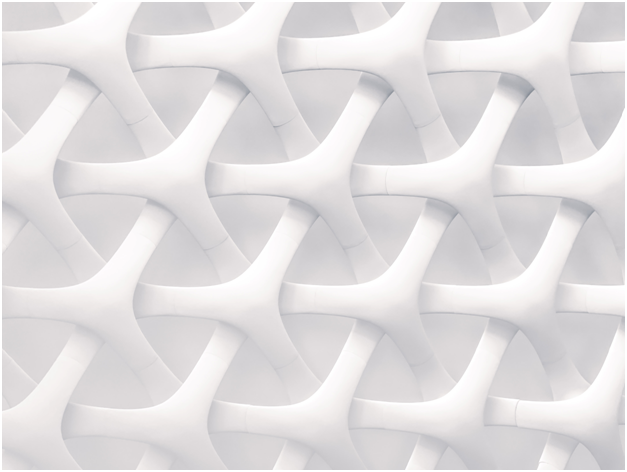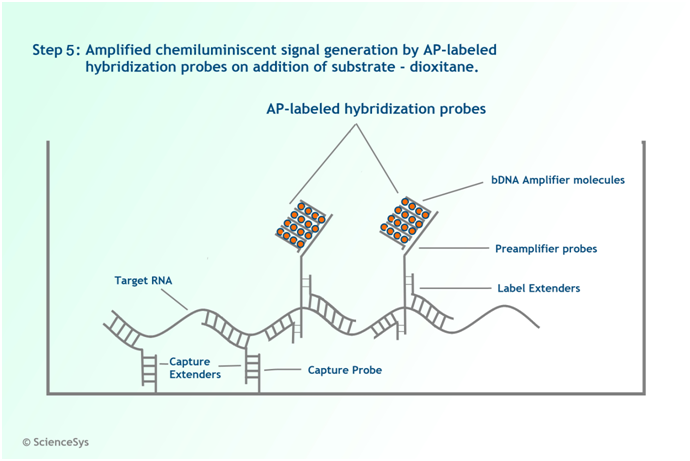Branched chain DNA (bDNA) assay is a powerful multi-application molecular diagnostic technique based on signal amplification of available nucleic acid in a given sample. It is unique from the PCR technique, which utilizes the target nucleic acid amplification process for visualization and quantification of nucleic acid.

The signal amplification technology with bDNA utilizes various signal amplification and hybridization probes which makes the technique reliable, sensitive, and specific. The nucleic acid detection range of the third generation bDNA technology is as low as 50 nucleotides to about 10 million molecules and is highly applicable in monitoring disease progression. FDA approved the bDNA technology for HIV-1 and HCV viral load testing, so as to monitor disease progression in HIV-1 and HCV patients. Additionally, the technique has proved equally useful for the detection of infections by different microorganisms, including Trypanosoma brucei, cytomegalovirus, multi-drug resistant Staphylococci, and Hepatitis Virus.
Principle of Branched Chain DNA assay
Principally, the bDNA assay is based on the hybridization process by using probes (stretches of single-stranded DNA used to detect the presence of complementary nucleic acid sequences). Different sets of probes are designed for fixation and signal amplification of the target DNA or RNA, of which one is labeled with AP (Alkaline Phosphatase) enzyme. This enzyme upon addition to its substrate (dioxetane), catalyzes a chemiluminescent process. This AP-catalyzed light emission is recorded as luminescent counts on a plate reading luminometer. The intensity of light emitted is proportional to the amount of DNA/RNA present in the given specimen and the results are expressed as mega equivalents per ml (MEq/ ml).
Probes in the bDNA assay (third-generation bDNA assay), are designed in a way, which enables rapid amplification of the light emitted, and the quantification of very low amounts of nucleic acids (DNA/RNA) can be performed.
Capture Probe: The capture probe is fixed on the solid surface, usually in a microwell plate. It contains complementary sequences for hybridization with Capture Extenders.
Capture Extenders: They are short nucleotide fragments, complementary to the target DNA/RNA. They contain specific sequences, which are complementary to the target Viral or bacterial nucleic acid as well as the contiguous sequences are complementary to the Capture probe.
Label Extenders: Label extenders are designed to hybridize to contiguous regions on the target and to provide sequences for hybridization of a preamplifier oligonucleotide.
Preamplifier Oligonucleotides: Added with the third generation of bDNA assay, preamplifier probes hybridize with label extenders and at the same time provide multiple slots for hybridization of bDNA amplifier molecules. The preamplifier oligonucleotide binds with two adjacent label extenders and forms a stable hybrid.
bDNA Amplifiers: Multiple bDNA amplifier probes are hybridized to the preamplifier molecules to form a branched comb-like structure. Each bDNA amplifier molecule has been designed to contain 15 arms, each of which contains three binding sites for alkaline phosphatase-conjugated “label probes”.
The following image illustrations are self-explanatory of the bDNA assay process.
Step 1:
The disruption of bacterial or viral nucleic acid is the first and vital step for the quantification of nucleic acid. Lysis reagents, usually containing Proteinase K (a broad-spectrum serine protease) is used for the disruption of outer proteinaceous wraps of bacteria and viruses.

Step 2:
The label extenders, designed complementary to the bacterial or viral nucleic acid hybridizes stably at the targeted site.
Step 3:
Capture probes pre-fixed in the solid surface of the microtitre plate, hybridize with the capture extenders. The nucleic acid is also fixed to the solid support with this step.

Step 4:
Label Extenders hybridize with the target sequence in the nucleotide chain, and with the preamplifier molecules at the other arm. The preamplifier molecules hybridize with two adjacent label extenders to stabilize and is designed in such a way so as its contiguous region is complementary to the adjacent label extenders. The bDNA amplifiers hybridize with their respective complementary regions in the preamplifier probe, forming a branched structure; which is where the assay gets its name from. The stability of the branched form is a result of stable H-bonding between the complementary strands, while the adherence of the preamplifier oligonucleotides with the adjacent label extenders is pivotal.

Step 5:
The AP-labeled (Alkaline Phosphatase) hybridization probes when added hybridize to their respective slots in the bDNA amplifiers, each of which contains three or more binding sites to the probes. Alkaline phosphatase is a widely used enzyme in molecular biology, and primarily functions by operating the 5’ phosphate group from nucleic acids. The AP-labeled probe, on the addition of its substrate dioxetane, brings about a chemiluminescent reaction that can be detected by a plate reading luminometer. The substrate, (dioxetane) is the derivative of adamantyl 1,2-dioxetane phosphate. When AP dephosphorylates the substrate, it decomposes and emits light detectable at λ-max 470 nm.

With the precision, sensitivity for measuring the lowest concentrations of nucleic acids, and ease of use for the quantitative analysis branched DNA assay is escalating among molecular diagnostics tools in recent times.
References and Sources:Tsongalis, G. J. (2006). Branched DNA technology in molecular diagnostics. American journal of clinical pathology, 126(3), 448–453.Kern, D., Collins, M., Fultz, T., Detmer, J., Hamren, S., Peterkin, J. J., … & Todd, J. (1996). An enhanced-sensitivity branched-DNA assay for quantification of human immunodeficiency virus type 1 RNA in plasma. Journal of Clinical Microbiology, 34(12), 3196–3202.https://www.nature.com/subjects/dna-probeshttps://www.mybiosource.com/learn/branched-dna-bdna-technology/

Post a Comment